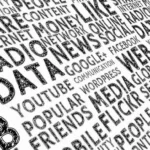
Communicating in the Digital Age: 20 Years of Change
June 4, 2025
Macca’s Rebranding in Australia
June 5, 2025Digital platforms paving the way
The paradigm surrounding the way we communicate is undoubtedly changing. It doesn’t require a doctorate in anthropology or human behavior to recognize it. If you take a moment to consider some of the recent trends, you’ll probably find yourself pleasantly surprised by how communication has dramatically evolved into something far beyond anyone’s original expectations, especially given the relatively short time frame in the grand history of communication.
Authors like Isaac Asimov, as far back as 1942, predicted the invention of entities similar to the internet and its psychohistorical usage by various agencies, to advertise, to capture vast amounts of data on human behavior with ease, whether for marketing purposes or perhaps something more insidious. He also foresaw many speculative technological advances that would accompany this, such as mobile devices and smartphones, which today can be found in literally billions of pockets worldwide.
This paradigm shift is real. People across the globe, from diverse cultures and economic backgrounds, are becoming increasingly familiar with interactive media and the technological devices that make it accessible. The internet, what an astounding creation! It has changed the world and arguably stands as one of humanity’s greatest inventions since we devised the means to calculate time. In recent years, it has become an almost essential part of daily life for billions, often unifying the world and offering insight into the mindsets of all who participate. I’m sure we’ve all used the internet at some point for education, entertainment, or business.
Platforms like YouTube, Facebook (which had over 425 million users back in 2012 and now boasts nearly 3 billion), and Twitter reveal a stunning phenomenon. Advertisers are realizing they no longer need to spend massive budgets to get their message out because their audiences often do it for them, mostly for free. These smart companies have tapped into people’s desire to express their thoughts and opinions, positively uniting the globe to some extent.
These platforms recognize the value of their reach and are capitalizing on it. They are encouraging companies to shift their advertising budgets away from costly traditional media such as television toward online and mobile advertising. Constantly evolving their features, these platforms aim to better serve both consumers and advertisers. Take Facebook’s recent introduction of advertising directly within users’ news feeds, including on mobile devices, a space previously nearly inaccessible to advertisers and now a major source of revenue.
Consider what Lions Gate Entertainment CEO Jon Feltheimer said when discussing their decision to cut $15–20 million from traditional TV ad budgets to focus more on online social media platforms during the marketing of The Hunger Games in 2012. The nature of the internet and social media streams made this a strategic move. Of course, relying heavily on social media can carry risks. Negative commentary can quickly damage a product, brand, or service. But Lions Gate’s success signaled a clear warning to TV networks. The communications landscape is rapidly changing.
In conclusion, thanks to the visionaries who turned science fiction into reality, the world now has ever-evolving platforms and devices that allow us to communicate on a massive scale. This shift has transformed the paradigm of communication, giving savvy brand owners unprecedented creative freedom to craft advertising campaigns that take audiences on imaginative journeys, while providing the tools to monitor, evaluate, and improve future marketing strategies at costs once deemed unthinkable.
This is not to say television is dead, but it is clear its dominance is waning.
First published in Sindo Magazine, 2012 (Edited 2025)


